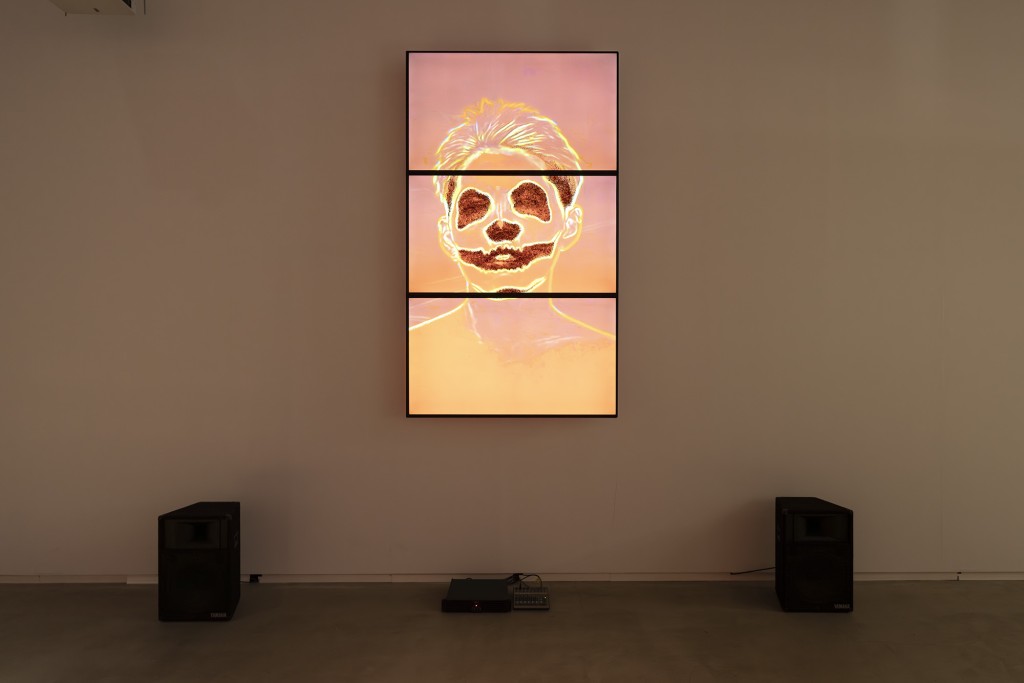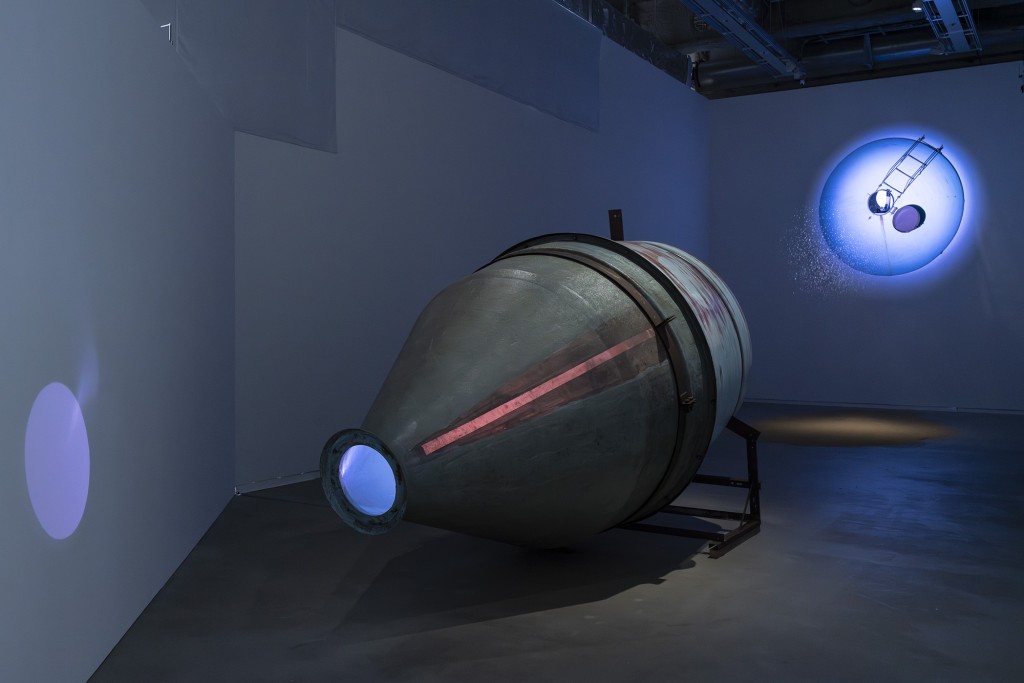Lectures through Death Growls and Counter-Curse Salutes

There’s a certain anxiety that sometimes permeates contemporary art. It’s the didactic attitude of artists who try to teach or impose ideas through their work. For example, there are research-based exhibitions that unpack history, tag things with labels, and display books related to its theme. Of course, museums can play a role as educational institutions within society and certain exhibitions aim to educate viewers by using art as a tool. However, in recent years, it feels as though artists increasingly create and present works that emphasize “education.” Politically correct works that are democratically created through workshops or artworks that attempt to reconstruct history through literal lectures precisely fall under this category. Of course, these approaches are important, and some of the art is noteworthy, but this kind of “didactic attitude” can be uncomfortable. It is an attempt to convince the viewer, as though the art has a predetermined conclusion, and the viewer has no freedom.
The art center BUG* is currently showing Overland_Spillover#1, an exhibition organized by the independent curator Arata Hasegawa. The title refers to the phenomenon of signal overspill, which suggests the show would overflow with information spilling out in unpredictable directions. However, unlike other group exhibitions I have seen at BUG, there are only three artworks on display, one of which is read at the entrance and exit of the space. I entered the venue expecting to see something spilling over, but I was surprised to find only two pieces filling up the exhibition space. Loud recordings were blasting and leaking into the adjoining cafe, making it difficult for customers to hold a conversation. I learned after viewing the exhibition that these sounds were, in fact, lectures.

Installed high up on the right side of the exhibition wall is D.L.P. (animals), a video work by Shuhei Hayashi. True to his background as a death metal musician, Hayashi narrates something in a death growl (composed and arranged by Ryusei Miyazaki). The viewer looks up at the artwork as if they are in the front row facing a stage to “listen” to this “narration,” but they cannot understand a single thing. The handout describes the piece as a lecture performance delivered in a death growl that addresses discourses surrounding the extermination of animals. One can glean that the artist is conducting some kind of “lecture.” However, even knowing the context, the viewer does not receive a proper lecture because they cannot discern any clear meaning from the death growls. The work fails to be a lecture; the death growls take over and only the gesture remains. The viewer simply continues to listen, rather intently, without gaining any understanding, unable to exit the space. Strangely enough, one cannot step away from the piece. Perhaps the experience of being engulfed in the artwork displayed high above produces a certain kind of sublimity. Perhaps the viewer unwittingly performs the role of the “viewer.”

However, the first thing that the viewer sees when entering the exhibition is in fact Salvage Club, a radio drama installation by MES, a Tokyo-based artist duo formed by Kanae Tanikawa and Takeru Arai in 2015. A livestock feeder used to regularly dispense food is placed on its side instead of its usual upright position at the front of the space. Displayed at a tilted angle, the feeder looks like a scrapped component of a small spacecraft or an old cannon. The gigantic lid of the feeder is embedded into the frontal wall at a high position (slightly higher than Hayashi’s piece), and its opening faces the exhibition space. The feeder and the lid stand face-to-face, which creates a strange sense of tension on the floor between them. A video of a pig filmed with a thermographic camera is cropped into a circle and projected on the left wall.
Through the feeder, Kanae Tanikawa’s voice narrates a story about a pig in Miyagi prefecture that survived by eating food from a feeder during the Great Tohoku Earthquake in 2011, while Takeru Arai’s voice reads out the Universal Declaration of Human Rights. It is a radio drama (lecture) performed by the MES duo. The story about a pig’s survival and the lecture about the declaration of human rights comes off as a bit ludicrous and earnest at the same time. The comical or humorous aspect is amplified when rice husks, which are fed to pigs, are dispensed from the lid of the feeder like party confetti. This is because the sound of the confetti shooting out sounds like “hakushon,” the Japanese onomatopoeia for sneezing, or “chikusho.” Chikusho is a word that emphasizes the inferiority of animals, but it also expresses the emotion of a deeply personal sense of remorse, of feeling vexed and disappointed. The sound of a sneeze doubling as the word chikusho resonates like a “counter-curse,”** as if it was an allergic reaction, by way of the rice husks, to nature (earthquakes), which is beyond human control, or to immense mechanisms of power (nuclear power plants).
[1] As described by MES in the handout.

Both Shuhei Hayashi and MES present their works in the form of a lecture. Hayashi’s piece delivered in a death growl is clearly labeled as a “lecture” in the handout, and MES’s work with the rice husk confetti blends a tragic story about a domesticated animal affected by the earthquake with a reading of the declaration of human rights, appealing to the audience by describing what happened then and what present meaning these things hold. It is possible to interpret the piece in that way. In other words, while we can assume that the artist duo’s radio drama is a lecture, no sense of “discomfort” lingers. This is because, instead of making the viewer listen to something, the work overwhelms them. There is not a sliver of didacticism here. Visitors who expect to “view” art are showered from above with death growls and literal rice husks. The two works do not abandon a sense of absurdity.
Many lecture performances or research-based artworks produce a sense of “discomfort” because they simply communicate their own educational and political correctness in a serious, humorless tone and assume they can reach the viewer. However, Hayashi and MES do not assume such a thing. They work under the premise that it is impossible to convey a message, or rather, that messages always spillover. The viewer’s whole body must be engulfed by it. In this sense, these two works serve as ironic commentaries on the genre of lecture performance. One could even describe them as broken lectures. However, they are broken precisely because they are properly functioning.

Although it seems like the exhibition only consists of these two works, another work presented in the form of a zine is placed in a partitioned space next to the cafe. FAQ?––a platform started through a koukan nikki, or an exchange diary, by Kanae Tanikawa and Marina Lisa Komiya in 2021––created their first zine for this exhibition, titled FAQ? exchange journal Vol.1: sex/gender, life, and resistance. The most intriguing aspect of the zine is that it takes the form of an exchange diary. The two write about things that they would only share with people they trust and candidly express ideas that cannot be communicated through a lecture. In a sense, the zine serves as a site where the two artists can whisper many more things to the audience than in a lecture. These small voices of resistance, distinct from the loud public voices, were displayed in a corner of the venue as if they spilled over from Hayashi and MES’s space to the outside, waiting for the audience to pick them up.
Befitting to the title that indicates signal overspill, the exhibition ends with the viewer feeling as if they are being pushed out of the venue to the outside world. The show was filled with the kind of energy and pressure that triggers a spillover.
* The BUG website states: “This conveys our dedication to not only host exhibition projects, but also support artists— creating a space where various people come together through art and mutually influence each other.” https://bug.art/en/about/
**As described by MES in the handout.
Curator at the National Art Center, Tokyo. She has previously worked at the National Museum of Art, Osaka (2015-2019), and the Ashiya City Museum of Art and History (2020-2021). She curated Universal / Remote (2023-2024, Contemporary Art Museum, Kumamoto; National Art Center, Tokyo; Hiroshima City Museum of Contemporary Art). She has also worked on Lee Ufan, 15th Anniversary of the National Art Center, Tokyo (2022, National Art Center, Tokyo), Ashiya Time: A Large Collection Exhibition (2020, Ashiya City Museum of Art and History), and Christian Boltanski ‒ Lifetime (2019, National Museum of Art, Osaka).

